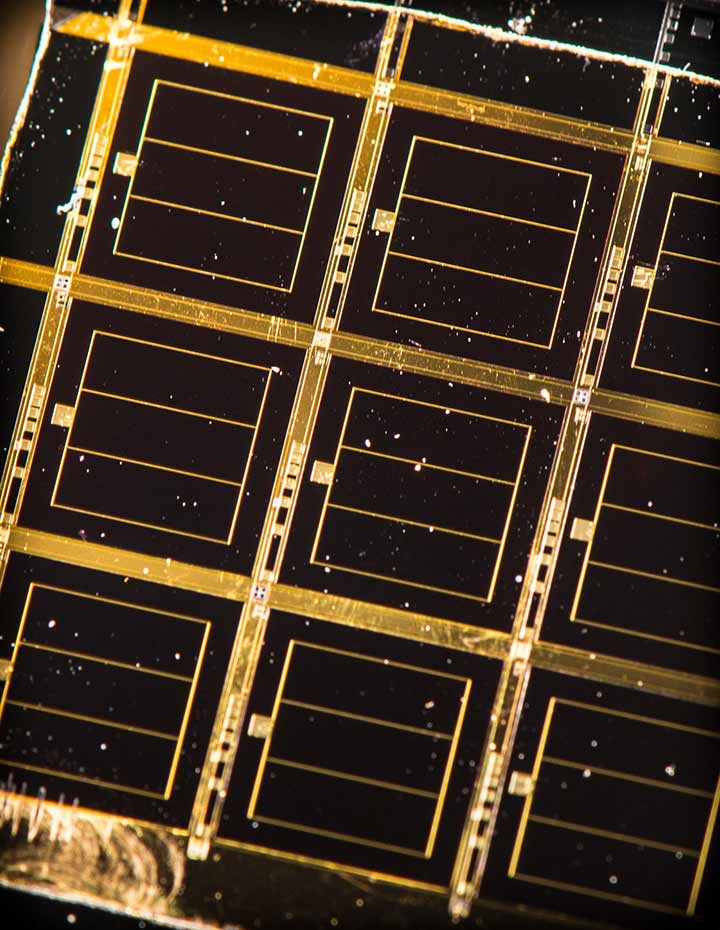NREL has developed an improved process for the production of PV cells using gallium arsenide and other compounds in the III-V group of elements. These materials are known for their extremely high efficiency potential, but the cost of production has meant that their use has been restricted to niche applications such as satellites and unmanned air vehicles.
Now, scientists at NREL say they have improved upon a process for the production of III-V cells, known as hydride vapor phase epitaxy (HVPE).
“HVPE is far from new,” said Aaron Ptak, a senior scientist who joined NREL in 2001. “It's been around since the '50s and '60s. We fondly refer to it as our brand new, 50-year-old growth technique.”
The NREL group returned to this process, which had fallen out of favor even among niche producers and the R&D community working with III-V solar cells. Key to their D-HVPE process is the use of a dual chamber reactor to deposit different layers, through which they report that they were able to reduce production times from more than one hour to around two minutes.
The team has been able to produce a GaAs cell with 25.3% efficiency. While NREL acknowledges that the process will not immediately bring costs down far enough to increase the material’s commercial appeal beyond satellites, military and other niche applications where efficiency comes before cost.
Popular content
Kelsey Horowitz, part of the Techno Economic Analysis Group in NREL's Strategic Energy Analysis Center, however, forecasts that with tweaks and economies of scale, cells made using D-HVPE could generate electricity at between $0.20 and $0.80/W, and theorizes that applications such as integration with EVs, rooftops not strong enough to support a silicon PV array, and portable/wearable solar panels could be viable at this level. “There are these intermediate markets where higher prices can be tolerated,” says Horowitz.
The researchers also acknowledge that ramping up their process commercially would be another extremely expensive step. “We have an R&D technology that works really, really well,” continues Ptak. “We have designs for a pilot-scale reactor, but we have no way to get from A to B. It's going to be very capital intensive to get to that step.”
NREL also has a deal with U.S. company Microlink Devices for the commercialization of another ultra-lightweight cell concept, which also utilizes gallium arsenide in its production process. The triple junction cell developed by Microlink has achieved 37.75% efficiency, and a power density of more than 3000 W/kg, and has been used to power the Zephyr S HALE, a fully solar powered, high altitude, unmanned air vehicle, able to carry out similar functions to a satellite.
This content is protected by copyright and may not be reused. If you want to cooperate with us and would like to reuse some of our content, please contact: editors@pv-magazine.com.



3 comments
By submitting this form you agree to pv magazine using your data for the purposes of publishing your comment.
Your personal data will only be disclosed or otherwise transmitted to third parties for the purposes of spam filtering or if this is necessary for technical maintenance of the website. Any other transfer to third parties will not take place unless this is justified on the basis of applicable data protection regulations or if pv magazine is legally obliged to do so.
You may revoke this consent at any time with effect for the future, in which case your personal data will be deleted immediately. Otherwise, your data will be deleted if pv magazine has processed your request or the purpose of data storage is fulfilled.
Further information on data privacy can be found in our Data Protection Policy.